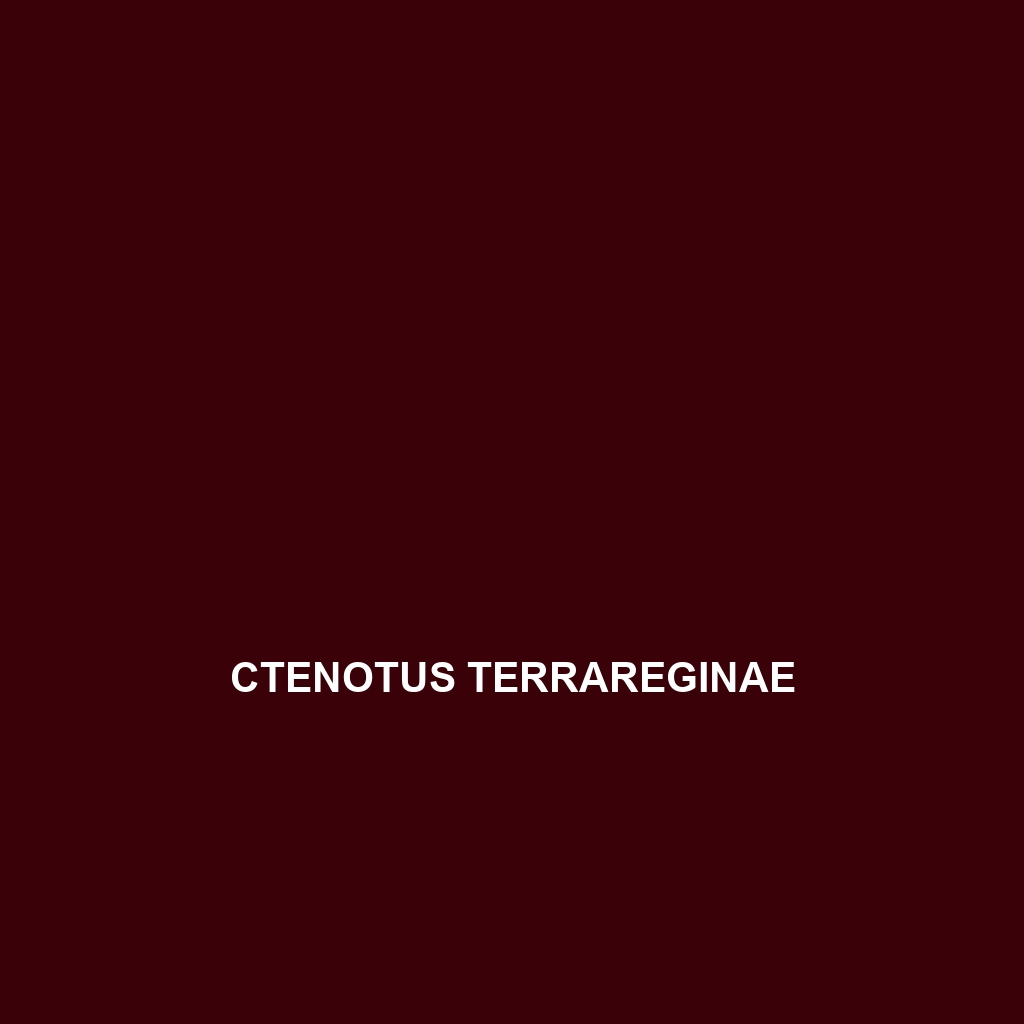Ctenotus terrareginae: A Comprehensive Overview
Common Name: Ctenotus terrareginae
Scientific Name: Ctenotus terrareginae
Habitat
Ctenotus terrareginae is primarily found in the arid and semi-arid regions of Australia. This lizard species typically inhabits sandy soils, spinifex grasslands, and open woodlands, primarily located in the central and northern areas of the continent. These habitats provide the necessary cover and temperature regulation that Ctenotus terrareginae needs for optimal survival.
Physical Characteristics
This species of skink reaches an average length of about 10 to 15 centimeters. Ctenotus terrareginae exhibits a slender body with a distinctively smooth and glossy skin texture. Its coloration reflects its environment, appearing predominantly brown or grey with lighter stripes along the sides, which serve as camouflage against predators. Notably, it possesses elongated limbs and a slightly flattened head, characteristics that enhance its agility and efficiency in its natural habitat.
Behavior
Ctenotus terrareginae is known for its diurnal behavior, becoming active during the day. It is a quick and agile mover, often seen darting between vegetation for cover. Socially, these lizards tend to be solitary, with males occasionally displaying territorial behavior during the breeding season. Their quick reflexes and ability to blend into their surroundings also assist in evading predators.
Diet
The diet of Ctenotus terrareginae primarily consists of insects, spiders, and small invertebrates, making them effective predators within their ecosystem. They utilize their keen eyesight and fast movements to capture prey, demonstrating a typical foraging behavior seen in many skink species. This insectivorous diet is crucial during the warmer months, when food resources are abundant.
Reproduction
Ctenotus terrareginae breeds during the warmer months of the year, typically laying eggs in sheltered locations to protect them from predators. Female skinks can produce clutches of 3 to 7 eggs, which hatch within a month under ideal environmental conditions. The offspring are miniature versions of adults and display similar behaviors from a young age, learning quickly to forage for food and evade threats.
Conservation Status
Currently, Ctenotus terrareginae is classified as a species of Least Concern by the International Union for Conservation of Nature (IUCN). However, habitat loss due to land development and climate change poses potential threats. Continued monitoring of their populations is essential to ensure their conservation in natural habitats.
Interesting Facts
One fascinating aspect of Ctenotus terrareginae is its remarkable adaptability to harsh environments. This species can tolerate fluctuating temperatures and has the ability to enter a state of dormancy during extreme heat, conserving energy until conditions are favorable again. Its unique adaptation strategies make it an intriguing subject of study for herpetologists.
Role in Ecosystem
Ctenotus terrareginae plays a vital role in maintaining the balance of its ecosystem. As a consumer of various insects and invertebrates, it contributes to controlling pest populations, thus indirectly benefiting the flora of its environment. Moreover, as a prey species for larger predators, it helps sustain the food web dynamics in its habitat.
